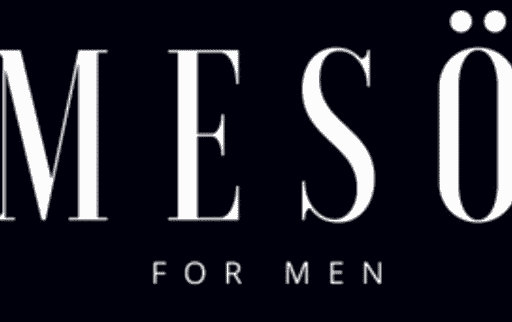Ultimate Guide To Choosing The Right Guard Length For Your Beard Trimmer
You know that finding the perfect guard length for your beard trimmer can make all the difference in maintaining a well-groomed look that suits your style. With the plethora of options available, it can be overwhelming to choose the right one. This ultimate guide will walk you through everything you need to know to select the ideal guard length for your beard trimmer, helping you achieve the precise length and style you desire effortlessly.
Key Takeaways:
- Consider Your Beard Length: Choose a guard length based on the length of your beard to achieve the desired style and look.
- Experiment with Different Lengths: Don’t be afraid to try out different guard lengths to find the one that works best for your beard type and personal preference.
- Regular Maintenance: Keep your beard trimmer clean and well-maintained to ensure a precise and consistent trim every time.
Understanding Beard Trimmer Guard Lengths
Some of the key elements to consider when selecting the right guard length for your beard trimmer include the type of guards available, their uses, and the standard guard length measurements. By understanding these aspects, you can achieve the desired results and maintain a well-groomed beard effortlessly.
Types of Guards and Their Uses
Concerning beard trimmers, various guard lengths are available to cater to different beard styles and preferences. Each guard serves a specific purpose, whether you want a short stubble look or a longer beard length for a more rugged appearance.
- Stubble Guard: Ideal for maintaining short stubble lengths
- Short Guard: Perfect for a neatly trimmed beard
- Medium Guard: Great for achieving a medium-length beard
- Long Guard: Used for longer beard styles or for trimming hair on the head
- Adjustable Guard: Allows for customized lengths between the standard guard sizes
Perceiving the differences between these guards and their uses will help you choose the most suitable one for your grooming needs, ensuring a precise and tailored trimming experience.
Standard Guard Length Measurements
Uses a standard system of measurements to denote the length of the guard. This system is typically measured in millimeters, with each guard representing a specific length. By understanding these standard measurements, you can easily select the guard that will achieve your desired beard length.
One important thing to note is that the guard length measurements may vary slightly between different beard trimmer brands. It is vital to refer to the specific measurements provided by the manufacturer to ensure accuracy in your grooming routine.
It is crucial to familiarize yourself with the standard guard length measurements to make informed decisions when choosing the right guard for your beard trimmer. This knowledge will empower you to achieve the desired beard length and style with precision and ease.
Factors to Consider When Choosing Guard Length
Your beard trimmer guard length plays a crucial role in achieving the perfect beard style. There are several factors to consider when selecting the right guard length to ensure that you achieve the desired look. Understanding these factors will help you make an informed decision and achieve the best results.
Beard Length and Texture
To determine the appropriate guard length for your beard trimmer, consider the current length and texture of your beard. If you have a shorter beard, a shorter guard length will help maintain a neat and well-groomed look. On the other hand, if you have a longer beard or thicker hair texture, a longer guard length will help trim and shape your beard more effectively.
When deciding on the guard length based on beard length and texture, it’s necessary to consider how much hair you want to trim. For a more natural look, opt for a slightly longer guard length that allows you to maintain some length while still tidying up stray hairs. The key is to choose a guard length that suits your beard’s texture and complements your overall style.
Desired Beard Style and Shape
Length is a crucial factor to consider when choosing the guard length for your beard trimmer. Different guard lengths are designed to help you achieve specific beard styles and shapes. For example, if you prefer a stubble look, opt for a shorter guard length to maintain a well-groomed appearance. On the other hand, if you aim for a fuller, longer beard, choose a guard length that allows you to maintain the desired length while shaping your beard.
The desired beard style and shape should guide your choice of guard length. Whether you want a clean-cut appearance or a more rugged look, selecting the right guard length is necessary for achieving your desired outcome. Experimenting with different guard lengths can help you find the perfect match for your preferred beard style.
Step-by-Step Guide to Trimming Your Beard
Once again, ensuring you have the right guard length for your beard trimmer is crucial for achieving the perfect look. Follow these steps to trim your beard like a pro:
| Step 1 | Wash and dry your beard to remove any dirt or products that could interfere with the trimming process. |
| Step 2 | Comb your beard in the direction of hair growth to detangle and make the trimming process smoother. |
| Step 3 | Choose the right guard length based on the desired length of your beard. Start with a longer guard length to avoid cutting off too much hair. |
| Step 4 | Trim your beard in the direction of hair growth, using smooth and even strokes for a uniform look. |
| Step 5 | Check for any uneven areas and make small adjustments as needed for a polished finish. |
Tips for a Smooth and Even Trim
An important tip to remember is to always start with a longer guard length than you think you need. You can always trim more hair off, but you can’t put it back once it’s cut. Additionally, make sure to clean your trimmer regularly to prevent clogging and ensure a smooth trim every time.
- Use light pressure when trimming to avoid cutting off more hair than intended.
- Trim your beard when it is dry for more accurate results.
Thou, paying attention to detail and taking your time will help you achieve the perfect beard trim.
Adjusting Guard Lengths for Contouring
Beard trimmers with adjustable guard lengths allow you to contour your beard for a more defined look. By using shorter guard lengths in certain areas, such as the cheeks and neckline, you can create a more polished and well-groomed appearance.
Tips for adjusting guard lengths for contouring:
When contouring your beard, start with a longer guard length and gradually decrease the length as needed to avoid cutting off too much hair. Use the trimmer with precision and take your time to achieve the desired shape and style.
Pros and Cons of Different Guard Lengths
All beard trimmers come with a variety of guard lengths to choose from, each offering different benefits and drawbacks. It’s important to understand the pros and cons of each guard length to achieve the desired look for your beard. For a detailed guide on beard trimmer guard sizes and styles, check out the Ultimate Guide to Beard Trimmer Guard Sizes and Styles.
Short Guards: Precision and Maintenance
Short guard lengths, such as 1mm to 5mm, are ideal for achieving precision in shaping your beard. They are perfect for maintaining stubble or creating a well-defined beard outline. However, using short guards may require more frequent trimming to keep the desired length consistent.
With short guards, you have more control over the shape of your beard, making it easier to create sharp lines and angles. These guards are great for a neat and polished look, especially if you prefer a shorter beard style.
Long Guards: Volume and Flexibility
Long guard lengths, typically ranging from 6mm to 15mm or more, are perfect for adding volume to your beard and offering flexibility in styling. They are great for achieving a fuller and thicker beard appearance without trimming too closely to the skin.
With long guards, you can experiment with different beard styles, from a medium-length beard to a long and flowing beard look. These guards offer versatility in creating various shapes and lengths, allowing you to customize your beard according to your preference.
Long guards also provide a buffer between the trimmer blades and your skin, reducing the risk of accidental cuts or razor burn. This added layer of protection makes them suitable for those who prefer a less aggressive trimming approach.
Summing up
Ultimately, choosing the right guard length for your beard trimmer is crucial in achieving the desired look for your facial hair. By considering factors such as hair type, beard length, and personal preferences, you can confidently select the guard length that will best suit your grooming needs. Whether you are aiming for a stubble look, a short beard, or a long beard, the guard length plays a key role in achieving the perfect style. Experimenting with different guard lengths can also help you discover what works best for your unique facial hair. Be mindful of, with the right guard length, you can easily maintain your beard and keep it looking sharp and well-groomed.
FAQ
Q: Why is choosing the right guard length important for my beard trimmer?
A: Choosing the right guard length for your beard trimmer is crucial as it determines the final look and length of your beard. Using the correct guard ensures that you achieve the desired style without trimming too much.
Q: How do I know which guard length to use for my beard trimmer?
A: To determine the right guard length for your beard trimmer, consider the length of your beard, the desired style, and the trimmer’s cutting capacity. Start with a longer guard length and gradually decrease until you achieve the perfect length.
Q: Can I use different guard lengths for different parts of my beard?
A: Yes, you can use different guard lengths for different parts of your beard to create a more tailored and blended look. For example, you may want a shorter length on the sides and a longer length on the chin. Experiment with various guard lengths to find what works best for you.




